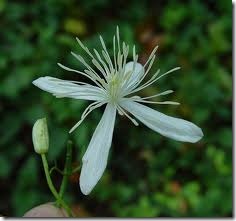-
Clematis is a flowering vine that is much valued for its decorative appeal and masses of flowers in colors from white to purple. Grow it in full sun to partial shade. The clematis is relatively disease-free, but does suffer from some conditions. If you know what to look out for, you may be able to prevent the problem or cure it before it takes hold.
Clematis Leaf or Stem Spot
-
Clematis leaf or stem spot, alternatively called clematis wilt, Ascochyta clematidina, is the most common disease of clematis. The vine turns brown and then droops and shrivels up. The stem is attacked close to the ground, so the plant can’t draw water. Apparent death of the plant follows — but, in actual fact, the roots survive and your clematis may recover. If you notice symptoms, cut out any affected stems as close to the base as possible. According to Mary Robson of the Washington State extension service, you can add sulfur solutions as a fungicide, but you must lay it down before you see symptoms. You should also remove dead foliage, since the fungus may persist in dead material.
Mildew
-
Garden Action in the United Kingdom reports that clematis is sometimes affected by mildew, Erysiphe aquilegiae. The fungus causes white, powdery patches on plant leaves and stems, and is more common in shade. You can apply fungicide if you catch the infection before symptoms develop; just as with wilt, sulfur solutions may help. Once the mold is established, you will find it much harder, if not impossible, to eradicate the mildew.
Leaf Spot and Crown Rot
-
Leaf spot and crown rot, Ascochyta aquilegiae, is another fungus-borne problem that may affect clematis. Warm, moist weather will increase risk of infection. Leaf spot causes cankers on the stem, brown and black lesions on the leaf and, of course, spots. Lower stems may also develop lesions; veins of crown and root may start to look black and then rot. To avoid rot, do not overcrowd your clematis and ensure the plant has a chance to dry out between waterings. You should also remove dead or dying plant material at season’s end.


Deprecated: strpos(): Passing null to parameter #1 ($haystack) of type string is deprecated in /home/agriviek8Qv/agriviet.net/public_html/wp-includes/comment-template.php on line 2522